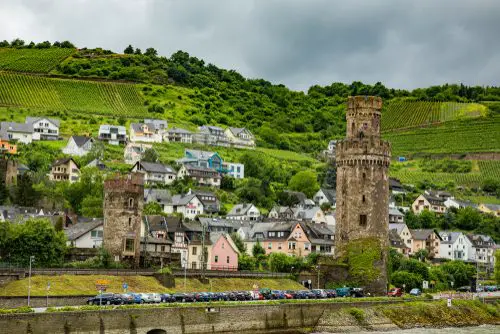Chateau Pape Clement, owned by Bernard Magrez, is returning to its 19th century past with the reintroduction of oxen in the vineyards. The two oxen are of the Gascon breed and are 4 year old twin brothers named Marel and Blanc.
Bernard Magrez, is returning to its 19th century past with the reintroduction of oxen in the vineyards. The two oxen are of the Gascon breed and are 4 year old twin brothers named Marel and Blanc.
The two young bulls weigh nearly 400kg (when mature this could be doubled) and are both being trained to plough between the narrow rows of vines. However they only understand Occitan (the old native tongue of southern France) so the herdsmen at the chateau have to learn it to be able to issue commands!
Magrez says that the oxen are lighter than tractors and therefore do not compact the soil – and of course they don’t pollute the environment and are less noisy than machines.
In addition, the oxen can also reach plots of vines that are inaccessible for vehicles. Magrez also says that they move more slowly than horses (which he also uses in the vineyard) and their work is more accurate.
The oxen stop when they encounter a difficulty or obstacle, unlike the horses which don’t stop once started. They are very powerful – an ox can pull and hold more than twice its weight and Marel and Blanc will be able to pull mowing and cutting machinery.
Marel and Blanc were born in the Ariège at La Bastide de Serou near the Pyrenees and were chosen when they were 2 years old for use at Chateau Pape Clement.
They are quiet, gentle giants but are also very hardy animals. The Gascon breed of cattle originates from the Central Pyrenees and Garonne Basin where they adapted to the harsh climate, mountainous conditions and rough grazing. The Gascon cattle can adapt to extreme changes in temperature as they are used to moving from summer to winter pastures and can walk long distances.
The cows are grey in colour and the calves are born red, turning grey at around 4 months of age. Their thick winter coats shed water well and they calve easily.
The bulls are grey, shading to black underneath. They were bred for beef and for haulage. The first Herd Book dates back to 1865 but the breed has been known since the 16th century.
There are Gascon cattle in Scotland as they have found favour there in the Highlands as they can cope with the challenging conditions (see www.gascon.org.uk for information on Gascons in the UK and www.gasconne.com for Gascons in France).
I think that reintroducing oxen is a fantastic idea – living in Gloucestershire I often see the very rare Gloucester cattle as I drive past the water meadows near the town. They nearly became extinct in 1975 but luckily they are being bred again and are slowly increasing in number.
These are an ancient breed that can be dated back to the 13th century. The Gloucester cattle breed is categorised as a rare breed by the Rare Breeds Survival Trust and its status is monitored on the Watchlist.
They were bred as strong draught oxen but their milk also produces our famous local cheeses: Double Gloucester and Single Gloucester. (If you are interested in finding out more about The Gloucester cattle check out the Gloucester Cattle Society at www.gloucestercattle.org.uk).
I hope that the Gascons at Chateau Pape Clement do very well and that more chateaux start to use oxen in the future. Several chateaux already use horse power – you can also find horses at Chateau La Lagune, Rauzan Segla, Margaux, Chateau Le Puy in the Cotes de Francs, Latour, Smith Haut Lafitte and Chateau Pontet Canet to name a few.

